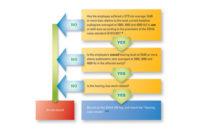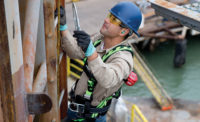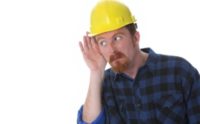Research has shown that worker self-efficacy is an important factor in the use of hearing protection. Knowing the level of noise reduction provided by hearing protection, the individual dose of noise, and being able to control that noise dose can improve self-efficacy, empowering workers to avoid overexposure to the hazardous noise and noise-induced hearing loss (NIHL).
As earplug fit-testing gains acceptance in occupational Hearing Conservation Programs, many safety professionals seek new methods to implement their fit-testing programs and to evaluate its data. In this article, we will explore how two companies use earplug fit-testing. Workers who underwent fit-testing were provided a survey both before and after testing about their attitudes toward proper fit and protection.
Measuring protection level
The level of protection provided by a particular earplug varies by individual and most importantly by the fit of that earplug. Measuring the skill with which individuals and groups fit their earplugs has been elusive until now, as fit-testing is becoming more wide-spread. Provided below are comparisons from two companies who use fit-testing.
Workers at Company A had a Time Weighted Average (TWA) in the low 80 dB range, with some intermittent high exposures (riveting and other hand tools). The safety manager wanted to ensure they were adequately protected both during the constant and intermittent hazardous noise environments. A reasonable goal would be to achieve at least 15 dB of protection or more during the exposures over 85-90 dB. In Figure 1, a few workers achieved less than 15 dB initially. Most of the study participants achieved over 10 dB (all but 8 workers), and the majority over 15 dB (about 65 of the 95) of protection per their final Personal Attenuation Rating (PAR*). These workers were experienced earplug users who fit and refit their earplugs several times a day as their noise levels vary. Note that the overall distribution shifts only slightly toward higher protection levels.
Figure 1. Distribution of Personal Attenuation Ratings (PAR) for Company A.
Blue bars show the distribution of Personal Attenuation Ratings on the first test for each individual. Purple bars show the distribution for the last PAR for each worker.
Figure 2. Distribution of the PAR for least protected ear with Company B.
Workers at Company B were exposed to vastly variable noise exposures with different levels and types of noise from day to day with no hazardous noise on some days and exposures in excess of 100 dB on other days. Workers did not feel confident in their ability to adequately fit earplugs and their initial fit-tests showed relatively low levels of protection. The distributions in Figure 2 show that, for the least protected ear, the distribution of PARs is bi-modal; about half the workers getting less than 11 dB of protection and about half getting 15 dB or more. Training involved one-on-one attention to each worker to coach them on correct insertion technique. Workers at Company B were asked what they changed about fitting their earplugs.
Fit-testing and individual training had an immediate and positive effect on the ability to fit earplugs. Individual training seemed to have a large effect (15 dB) while simply changing earplugs had a 6 dB effect. The effect of fit testing improved protection by 11-12 dB from the initial fitting to final PARs for all subjects (regardless of whether they changed earplugs or used the same model). The distribution of final PARs was also more normal and realistic for the exposures of Company B workers.
Company A workers were mostly experienced earplug users. The average attenuation increased only slightly (2-3 dB) for study participants. For a few workers, protection levels changed dramatically! For example, attenuation of 5 and 8 dB on initial tests changed to 20 and 21 dB on the third and final fit-test. Company B workers were less experienced. Their average attenuation increased dramatically (12-13 dB). For a few workers, attenuation levels increased by as much as 25 dB! Identification of under-protected workers is critical for an effective Hearing Conservation Program. Training and/or changing earplug selection can make a big difference at the individual level.
What do workers get from fit-testing?
At Company A, prior to their initial fit test, we asked if workers could tell approximately how much protection they were getting from their last fit after some training and feedback using fit-testing. Figure 3 shows that 75 percent of the study participants estimated their PAR within one 5-dB category of their actual PAR.
Figure 3. Accuracy of Company A users estimates of Personal Attenuation Rating (PAR). Categories were in 5 dB increments.
After the training and feedback, workers in Company A were asked, “How would you rate your ability to fit your earplugs?” (Figure 4) A few workers initially estimated their attenuation as fairly high and after feedback saw their fit was not adequate. Those workers tended to report decreased self-efficacy. Many of these workers achieved adequate protection on their initial fit-test, and those workers generally reported no change in their self-efficacy. This finding suggests that it is important when fit-testing to not judge the workers but to use it as a positive training experience. We recommend never saying a worker “failed” fit-testing, but simply to work toward the appropriate amount of protection for that worker.
Figure 4. Self-assessment of ability to assess the effectiveness of their earplugs in Company A.
However, when the workers from Company A were asked directly, “Are you better able to assess the effectiveness of your earplugs after fit-testing?” about 85 percent reported “Yes” or at least “Improved.” (Figure 5)
Figure 5. Company A answer to direct question “Are you better able to assess the effectiveness of your earplugs after fit-testing?”
Company B workers had a dramatic increase in their self-efficacy as measured by the question, “Do you know how much attenuation the HPD you use most frequently provides?” Prior to fit-testing, only about half (48.6 percent) said “Yes,” but after fit-testing, all workers (100 percent) agreed that they know how much attenuation their HPD provides.
Fit-testing benefits
Fit-testing is a relatively new and powerful tool for your Hearing Conservation Program. It can be used as an individual training tool to provide feedback to each worker so that they have the skill to fit their earplug and the confidence that they understand the difference between a poorly fit and well fit earplug. Fit-testing also provides metrics by which you can measure improvements in your HCP.
* In the study at Workplace A, the term PAR is used but the actual measure was a VeriPRO QuickCheck result, which is an estimate of PAR using only 500 Hz as the test frequency.







